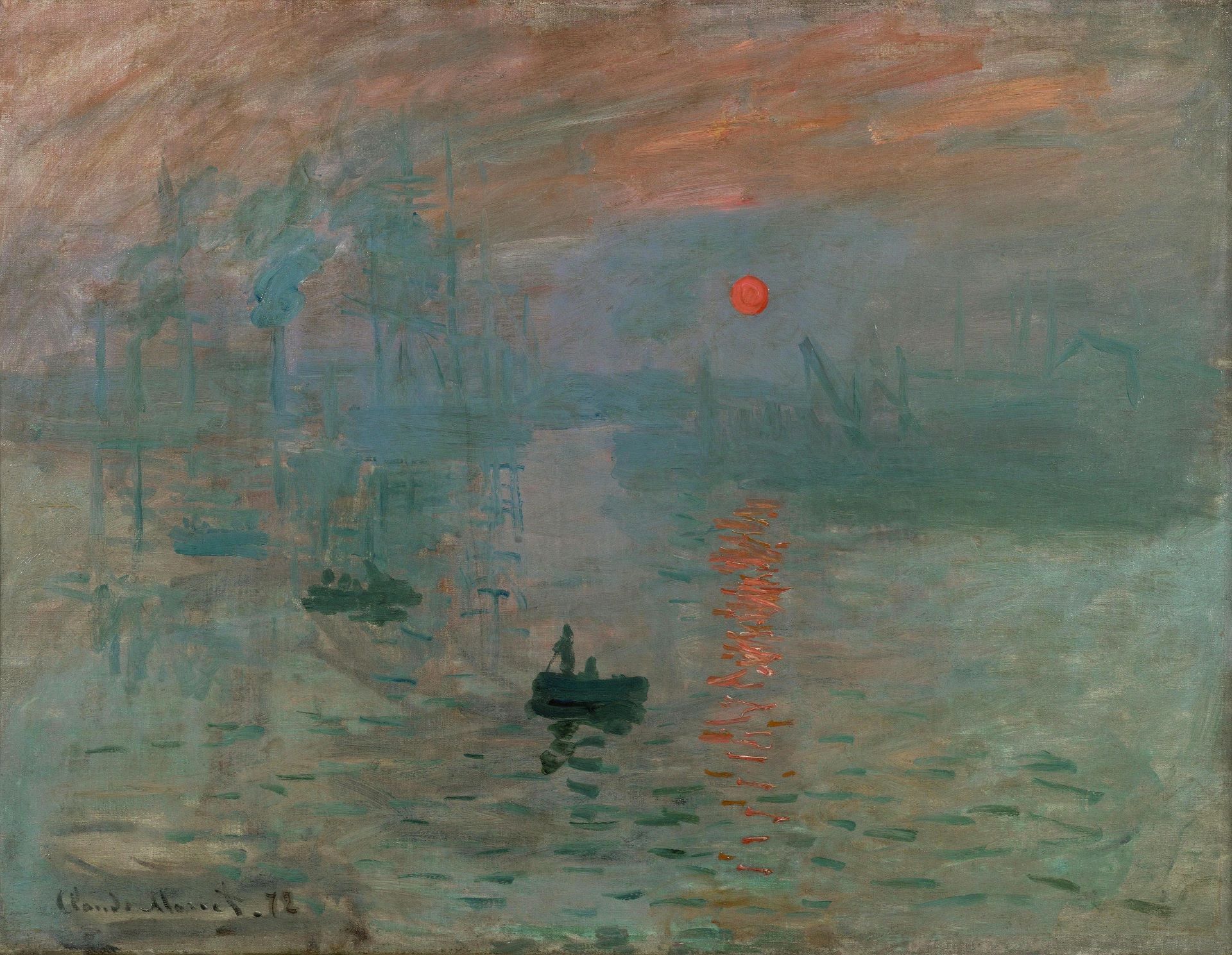
Early Childhood and Beginnings
Claude Monet was born on November 14, 1840, in Paris, France, but he spent much of his early childhood in the port city of Le Havre. Monet’s father, Adolphe Monet, was a grocer, and his mother, Louise-Justine Aubrée Monet, was a singer. His parents had hoped he would pursue a career in business, but Monet was drawn to the arts from a young age.
Monet’s early artistic talent was evident in his penchant for drawing caricatures of local people, which he would sell to make a little money. His caricatures were widely admired for their wit and precision, and they marked the first step in his journey as an artist.
Art Instruction and Early Works
Monet’s formal art instruction began in 1851 when he enrolled at the Le Havre secondary school of the arts. He was mentored by Jacques-François Ochard, a former student of Jacques-Louis David, the renowned French neoclassical painter. Ochard’s traditional style did not resonate with Monet’s burgeoning interest in more modern forms of expression. It was not until Monet met Eugène Boudin, a landscape artist who introduced him to the practice of painting en plein air (outdoors), that Monet’s true artistic passion was ignited. Boudin’s influence was crucial in shaping Monet’s approach to capturing natural light and color, which would become central themes in his later work.
In 1859, Monet moved to Paris to pursue his artistic career, enrolling at the Académie Suisse, where he met fellow artists such as Camille Pissarro. Monet’s early works from this period showed a strong influence of the Barbizon School, particularly in their focus on natural landscapes.
First Impressionist Paintings
In the 1860s, Monet began to develop his distinctive style, breaking away from the traditional, detailed academic painting that dominated the French art scene. His work “Impression, Sunrise” (1872) is often cited as the painting that gave the Impressionist movement its name. This piece, which depicts the port of Le Havre bathed in the morning light, was characterized by loose brushwork, a focus on the effects of light, and a departure from the precise lines and forms of earlier art styles. Monet’s emphasis on capturing the “impression” of a moment, rather than a detailed, realistic depiction, marked a revolutionary shift in art.
In 1874, Monet, along with other like-minded artists such as Pierre-Auguste Renoir, Edgar Degas, and Alfred Sisley, organized the first Impressionist exhibition. This exhibition was met with mixed reviews, with some critics deriding the works as unfinished sketches. Despite the initial criticism, the Impressionist movement gradually gained acceptance, and Monet became one of its leading figures.
Later Impressionism and Water Lilies Series
As Monet’s career progressed, he continued to explore the themes of light, color, and natural landscapes. In the 1880s and 1890s, he traveled extensively, painting in places like London, Venice, and the French Riviera. His series paintings, such as the “Haystacks,” “Rouen Cathedral,” and “Poplars,” showcased his fascination with the changing effects of light and atmosphere at different times of day and in various weather conditions.
In 1883, Monet settled in Giverny, where he created the beautiful gardens that would become the primary inspiration for his later works. The garden’s water lily pond, Japanese bridge, and lush flora provided endless subjects for his paintings. Monet’s “Water Lilies” series, which he worked on for the last three decades of his life, is perhaps his most famous body of work. These paintings, with their focus on the reflections and colors in the water, are masterpieces of abstract, almost meditative beauty. The series culminated in the large-scale canvases now housed in the Musée de l’Orangerie in Paris, which are considered among the greatest achievements of 20th-century art.
Last Years and Legacy
Monet’s later years were marked by personal challenges, including the death of his second wife, Alice Hoschedé, in 1911, and his own battle with cataracts, which affected his ability to see and paint. Despite these difficulties, Monet continued to work with determination and passion. His cataracts influenced the color palette of his later works, making them warmer and more red-toned, but even with impaired vision, he remained dedicated to his art.
Claude Monet passed away on December 5, 1926, at the age of 86 in Giverny. He was buried in the churchyard of the village, and his home and gardens were eventually preserved as a museum.
Monet’s legacy is immense. He is widely regarded as one of the founding figures of Impressionism and one of the most important painters in the history of art. His innovative approach to color, light, and brushwork had a profound influence on subsequent generations of artists, including the Post-Impressionists and the Abstract Expressionists. Today, Monet’s works are celebrated worldwide, and his contributions to the art world continue to inspire and captivate audiences.
-Phượng Vỹ-
